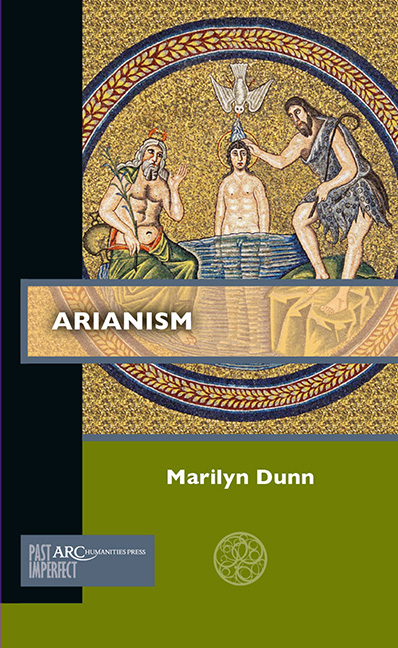Chapter 3 - Barbarian Homoianism after 381
Published online by Cambridge University Press: 18 June 2021
Summary
This chapter deals with the entry of barbarian groups into the Roman Empire in the early fifth century and the evolution of Homoianism (i.e., what opponents called “Arianism”) in the emergent barbarian kingdoms. It examines the way in which barbarian Homoianism developed socio-political dimensions as it was used to signify hegemony, military service and reward, and ties of loyalty, considering both its relationship to the practice of re-baptism of Nicene Christians (i.e., those who followed the Nicene Creed and are conventionally considered “Catholic”) and to gender. Then it focuses on what we know of the barbarian Homoian Churches: their language, liturgy, way of dating Easter, relic cult, funerary rituals and finally their organization.
Who Were the Barbarians?
In 381 Goths in the empire were permitted to follow their own form of Christianity and in 382 they were formally settled by treaty in imperial territory. But in 395 the Gothic leader Alaric rebelled against the Empire, harassing the Balkans in the late 390s, and sacking Rome in 410. In 406/7, large groups of barbarians—Vandals, Alans, Sueves, and (possibly) Burgundes— breached the Rhine frontier and headed across Gaul into Hispania. After Alaric's death in Italy, his forces turned northwards and also entered Gaul. Under the leadership of Wallia, they became imperial agents, inflicting a massive defeat on the Siling Vandals and Alans in 418. The Sueves retreated to Gallæcia in northwestern Iberia and the Alans, after the death of their leader Addax, allied themselves with the Hasding Vandals. The Goths were rewarded with federate status by the Empire: settled in southwestern Gaul in the 420s they gradually created what became the Visigothic kingdom, centred on Toulouse and the Garonne valley. Later in the fifth century the Visigoths staged military interventions in the Iberian Peninsula, before the Franks inflicted a crushing defeat on Alaric II at the battle of Vouillé in 507. Visigoths had already begun to settle in Spain in the fifth century; and after Vouillé, a Visigothic state centred on Spain and the southern Gallic province of Septimania began to take shape. Meanwhile, in 429, Hasding Vandals and Alans under Geiseric, along with some Sueves, Goths, and Hispano-Romans, crossed from southern Spain to North Africa.
- Type
- Chapter
- Information
- Arianism , pp. 51 - 78Publisher: Amsterdam University PressPrint publication year: 2021



